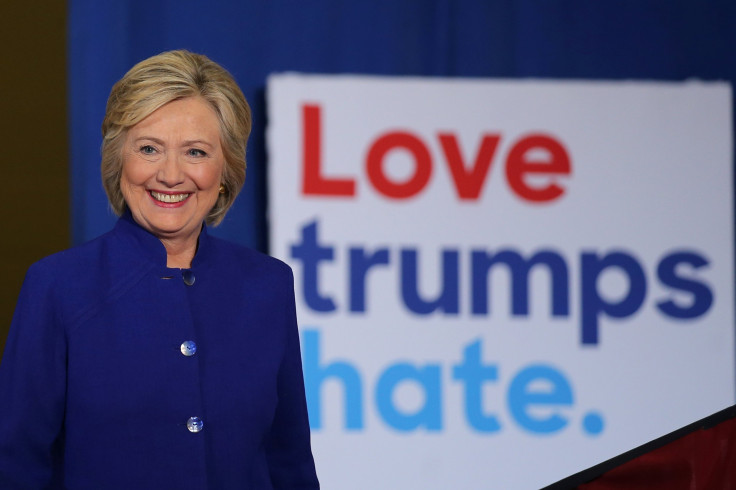2016 Presidential Election: The Surprising Tech Tool Hillary Clinton’s Campaign Uses To Communicate With Voters

The official campaign working on electing Hillary Clinton into office, Hillary for America, is using a technology tool to get voters to back the Democratic presidential candidate and it is probably not what you’re thinking. In the world of social media platforms boasting millions of impressionable active users, the team turns to something relatively more old school: texting.
“We’ve been shocked at how many people are responding favorably to these things,” said Teddy Goff, chief digital and technology strategist for Hillary for America, at the 2016 Geekwire Summit in Seattle. “It’s a technology layer on top of old-fashioned organizing.”
While unassuming, texting is also an obvious choice in many ways. For voters, an SMS is less invasive and disturbing than phone calls. For volunteers, the odds of angry recipients, being hung up on or getting blatantly rejected significantly drops off.
And then there’s the reach—according to the Pew Research Center, 68 percent of U.S. adults have smartphones and a survey found that text messaging is the most frequently used feature. Last Year, mobile data tracking firm Infomate’s International Smartphone Mobility Report found that the average American spends 26 minutes a day texting as opposed to six minutes a day on voice calls.
"Our data reveals that most Americans love texting and would rather send a text than make a call," Infomate CEO Will Hodgman told the Chicago Tribune at the time.

That’s not to say the campaign doesn’t use anything aside from texts and emails. On the back end of things, the 70-some members use Slack and on the social media front, the campaign is on major platforms like Twitter, Facebook, Instagram and Snapchat. But according to Goff, “it doesn’t fall to presidential campaigns to be early adopters” of brand new social media apps because they have “limited resources” and are “trying to reach the maximum number of people.”
The most important technological tools in winning the election; however, are email and Facebook. According to Goff, emails play a crucial role in efficiently rallying supporters, organizing volunteers, raising money, and swaying voters. It is, by Goff’s account, “still the most powerful tool in [their] tool kit.”
“We do tons of innovative stuff in terms of how we work, in terms of how we organize, and how we fundraise,” said Goff, who was the digital director for the Obama reelection campaign in 2012 and ran digital campaigns for Obama in 2008, told the audience. “But in terms of where we go: email, Facebook, Twitter--because it’s so political--sort of the usual suspect.”
Goff does note that the person-to-person is still important.
“There’s not yet a technology that’s more important than a person-to-person conversation,” said Goff. “And that’s a quantified fact.”
© Copyright IBTimes 2025. All rights reserved.






















